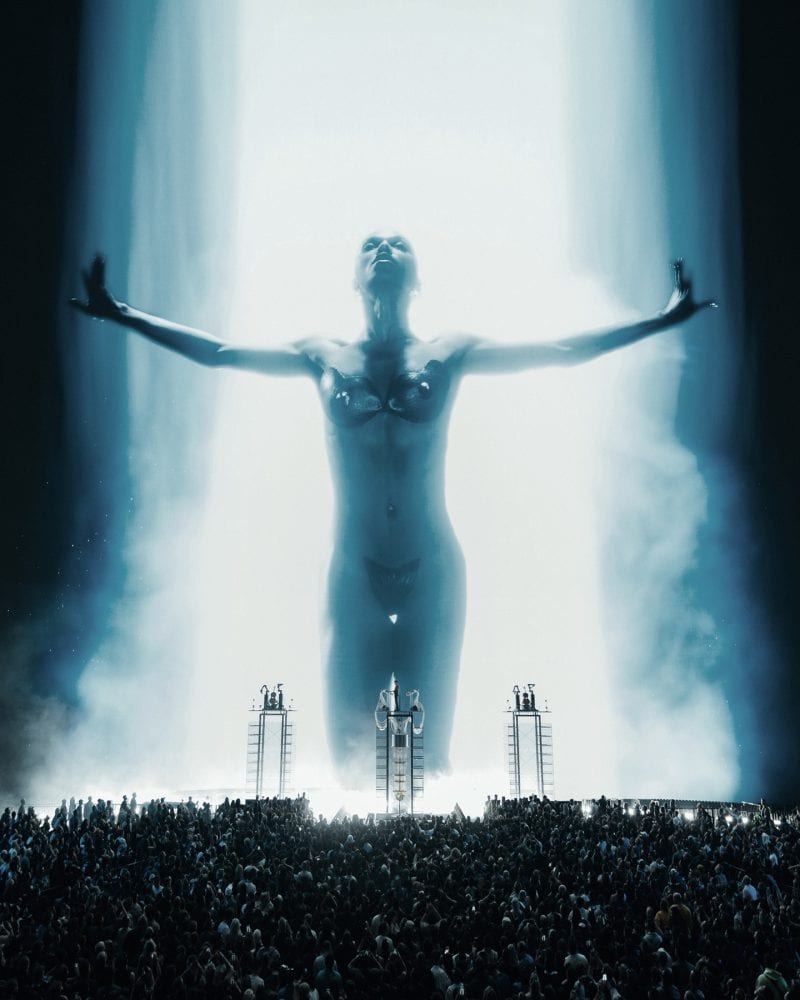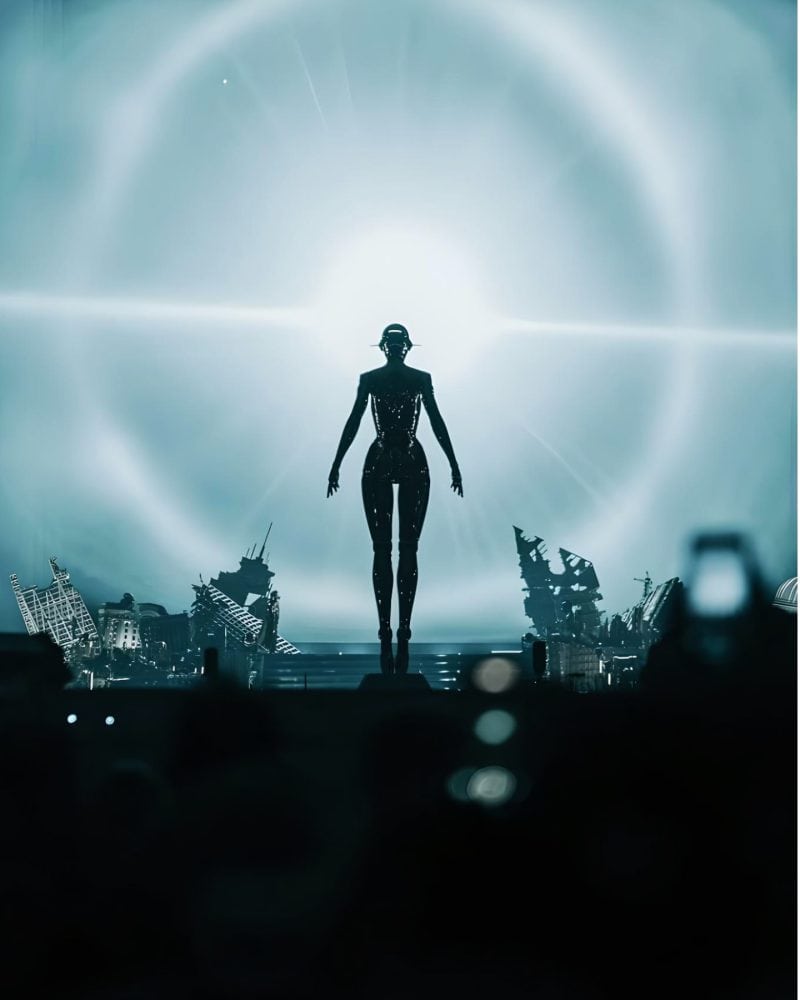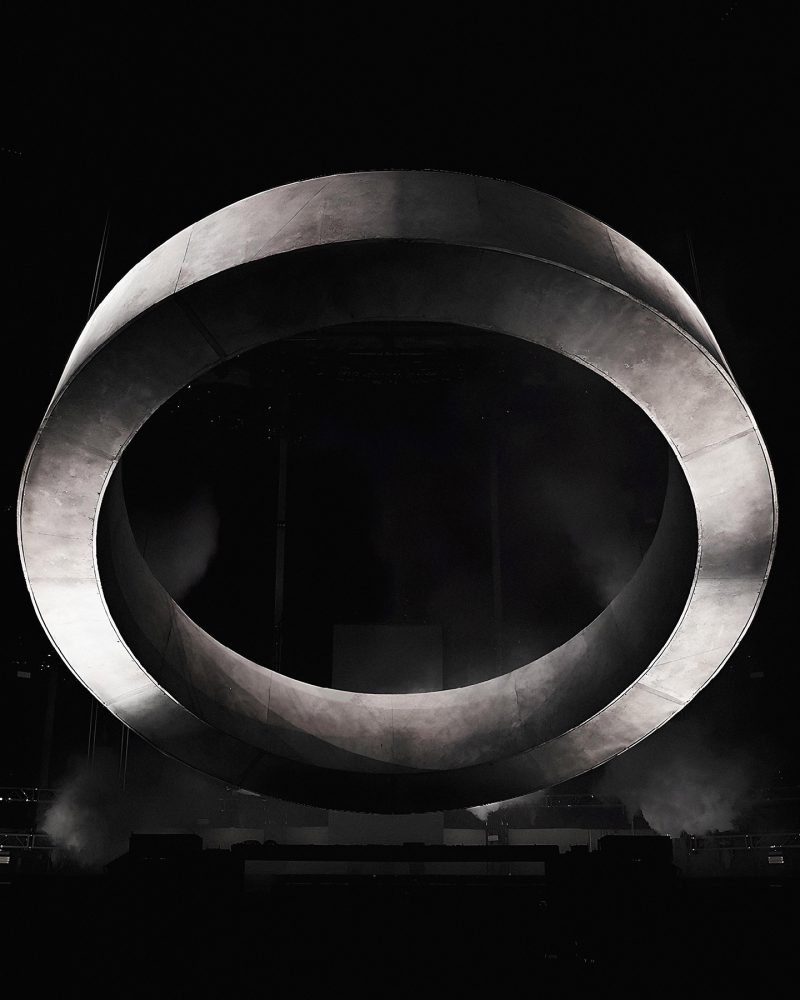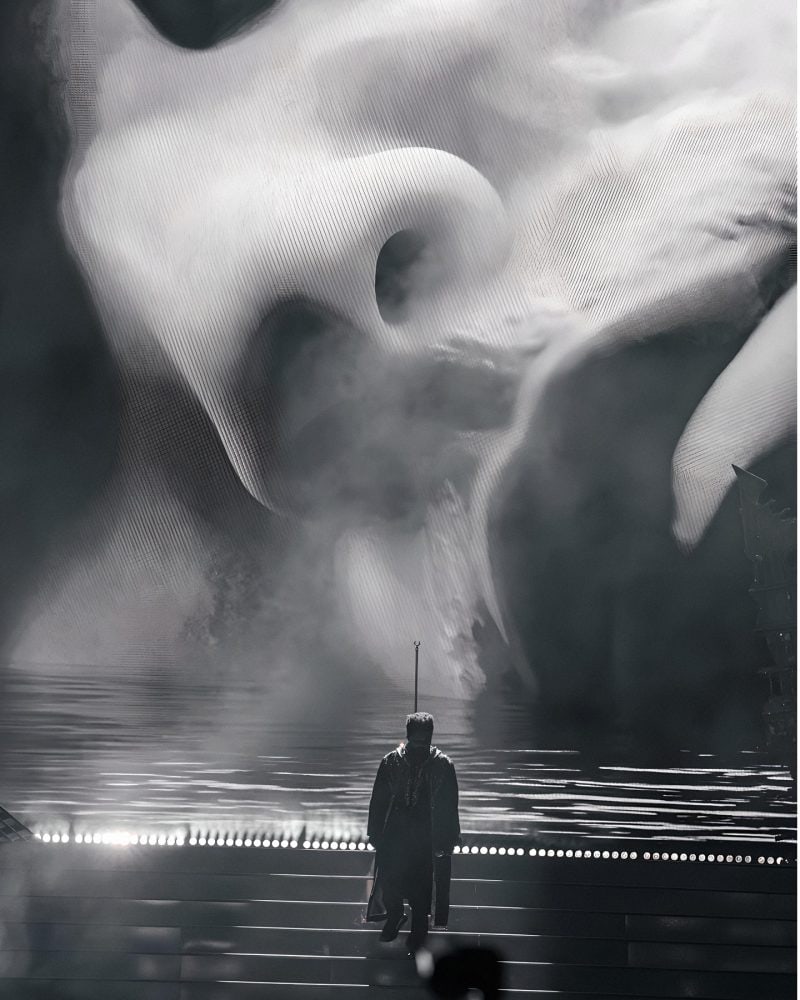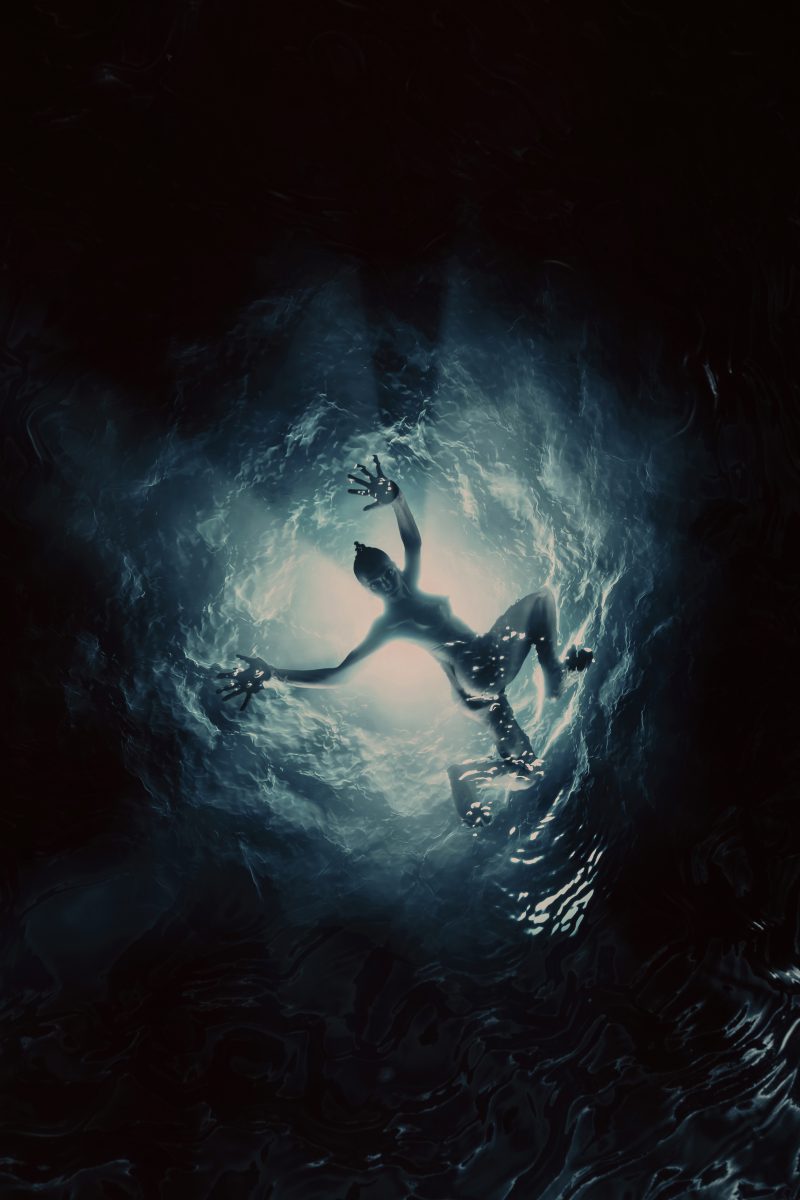It is perhaps on this thin, porous, sacred threshold that the work of Alexander Wessely unfolds. A Swedish artist whose practice is nourished by searing contrasts and impossible coexistences: the sacred and the synthetic, flesh and code, ruin and rebirth. His universe is at once mythological and post-human, constructed not to be deciphered, but to be felt—a visceral, stratified language that moves through photography, sculpture, performance, and installation in search of emotional immediacy that precedes logic. Wessely doesn’t work within disciplines, but with the invisible weight of things.
From the very beginning, art was never a choice for him—it was a necessity. A primordial refuge to translate an ungraspable inner world, a way to survive the dissonance between self and surroundings. Creation became an act of decoding, a primitive grammar of existence. From this urgency, he has conjured images that do not merely represent, but invoke: visual altars, broken icons, mute rituals that speak of memory, loss, and transformation.
A formative period in Greece—immersed in the ancient tradition of marble sculpture—profoundly reshaped his relationship with matter and with time. Every surface became a silent archive, every fracture a mark to be listened to. In dialogue with the stone, beneath the blinding sun, Wessely learned the art of slowness and attention, understanding that form is not only a visual construct but an emotion sedimented over time.
In his work, bodies—human, animal, digital—appear as suspended presences, sacrificial fragments that question our fluid, extended, often distorted identities. The body becomes archive and relic, witness to collective trauma and futuristic longing, both object of worship and of violence. In this continual oscillation between control and chaos, between formal precision and surrender to accident, Wessely builds a poetics of the threshold: what remains after collapse, what emerges from ruin.
His approach to performance and staging amplifies this vision even further: the stage is not a space for spectacle, but a temporary temple—an arena where the audience can dissolve into a shared transformative experience. Each project becomes ritual, each image an invitation to feel before understanding.
Today, his current obsessions revolve around rebirth through fragmentation. He explores new forms of synthetic humanity, post-memory, and the convergence of the organic and the artificial in a vision that is radically emotional.
In this conversation, Alexander Wessely guides us through his inner and visual landscapes, revealing an artistic practice that seeks not answers but transfigurations. A visionary, radical journey—where the image ceases to be representation and becomes presence.
Ritamorena Zotti: How did it all begin for you? Was creating something that came from a deep need, or did it emerge more by chance, or even by accident?
Alexander Wessely: It came from necessity. Not as a career choice, but as survival. From a very early age I felt disconnected from the world around me, and creating became the only language I truly understood. It wasn’t about becoming an artist. It was about translating the noise in my head into something external so I could keep moving forward.
RZ: Your work moves between photography, sculpture, performance and multimedia installations. What connects these different mediums in your artistic process?
AW: What connects them is a sense of physicality. I don’t think in terms of disciplines, I think in terms of emotional weight. Whether it’s a sculpture or a massive projection, the purpose is the same: to create a visceral reaction before a logical one. The medium changes, but the core remains.
RZ: Many of your works feel suspended between the mythological and the post-human. What draws you to explore this tension between past and future?
AW: That space in between is where everything becomes interesting. We’re living in a time where technology is advancing faster than we can process emotionally. At the same time, we still carry ancient instincts, rituals, fears. I’m drawn to that friction, where the sacred meets the synthetic. Where mythology becomes code.
RZ: Your time in Greece, working with marble sculptors, seems to have deeply shaped your practice. How did that experience change your relationship with materiality and form?
AW: It completely shifted how I see time and permanence. Working with marble in the heat, in a tradition that spans millennia, made me more aware of material as memory. Every crack, every texture holds something deeper. It slowed me down, forced me to be present, and taught me that form is not just visual, it’s emotional.
RZ: There’s often a sacred, almost ritualistic atmosphere in your images. What kind of spirituality, if any, lives in your work?
AW: There is a spirituality, but it’s not tied to any religion. It’s more about reverence, toward existence, decay, memory. I often see my work as building altars to things we’ve lost or are afraid to confront. It’s about silence, repetition, transformation. I believe in the invisible weight of things.
RZ: In your live productions, the image becomes an immersive, collective experience. How do you imagine the stage as a space for transformation?
AW: For me, the stage is a temporary sanctuary. A space where the audience can dissolve into something larger than themselves. It’s not about entertainment, it’s about creating a shared emotional state. If done right, it becomes ritual. And in ritual, there’s always the potential for transformation.
RZ: You often depict bodies—human, animal, digital—as icons or fragments. What does the body represent in your visual language?
AW: The body is the archive. It carries history, trauma, evolution, desire. I’m fascinated by fragmented bodies because that’s how we live now—digitally extended, distorted, abstracted. The body becomes a symbol, sometimes worshipped, sometimes violated. It reflects both our vulnerability and our arrogance.
RZ: Your aesthetic often balances control and chaos, clarity and vision. How do you navigate this contrast while creating?
AW: By surrendering to it. I don’t believe in complete control. I believe in building a strong framework and then letting accidents shape the outcome. Chaos holds truth. Control gives it structure. The key is knowing when to step back and when to go deeper in. That tension is part of the work.
RZ: Looking at what you’re working on now: what themes, visions or obsessions are calling you the most?
AW: Right now, I’m obsessed with the idea of rebirth through fragmentation. I’m working on pieces that explore brokenness as a foundation for evolution, both personal and collective. There’s a strong focus on synthetic humanity, post-memory, and the merging of organic and artificial forms. I keep returning to the same questions:
What happens after collapse?
What do we become when nothing feels solid anymore?

